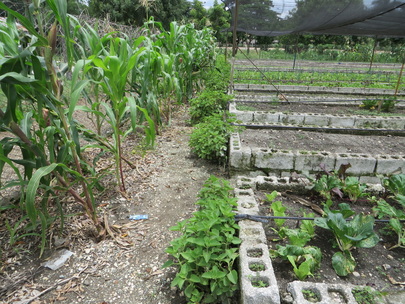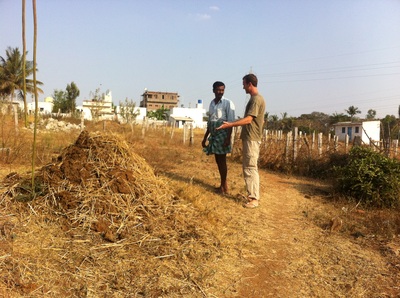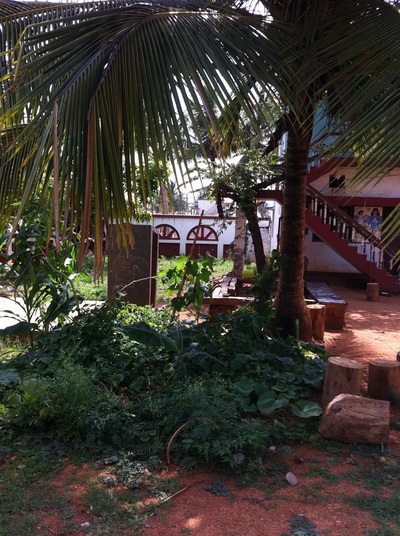By Anna Zisa
Examining the case of Cuban agricultural experience post the Triunfo de la Revolucion as Cuban’s commonly refer to the events of 1959 is very interesting when imagining scenarios of how a post-carbon society may arrange itself.
According to a study published in 2006, organic urban agriculture programs produced over 1kg of vegetables per capita and day (tripling the FAO standard of 0.3kg!). These positive results emerged from a remarkable effort to organize alternative production methods within a time period of “scarcity”.
Before the fall of the Socialist block, Cuban experienced a “Green Revolution” from 1984 to 1991. With the Soviet’s Union support, this period was characterized by increased productivity by clearing virgin lands for new farmland, extensive and export oriented monocrop cultivation –mainly sugar cane-, intensive use of imported agricultural chemicals, use of hybrids seeds and improved varieties, machinery and oil. During this period, also called “The Soviet Agricultural revolution”, the increased mechanization and the overuse of artificial fertilizers had negative effects on soil’s health, compacting it and saturating its absorbent capacity. Many farmers moved to urban areas which degenerated traditional practices and ancestral knowledge. It was in short, a time of strong dependence of the Soviet Union’s assistance masked under the impression of agricultural success as conceived by “progress standards” at that time.
According to a study published in 2006, organic urban agriculture programs produced over 1kg of vegetables per capita and day (tripling the FAO standard of 0.3kg!). These positive results emerged from a remarkable effort to organize alternative production methods within a time period of “scarcity”.
Before the fall of the Socialist block, Cuban experienced a “Green Revolution” from 1984 to 1991. With the Soviet’s Union support, this period was characterized by increased productivity by clearing virgin lands for new farmland, extensive and export oriented monocrop cultivation –mainly sugar cane-, intensive use of imported agricultural chemicals, use of hybrids seeds and improved varieties, machinery and oil. During this period, also called “The Soviet Agricultural revolution”, the increased mechanization and the overuse of artificial fertilizers had negative effects on soil’s health, compacting it and saturating its absorbent capacity. Many farmers moved to urban areas which degenerated traditional practices and ancestral knowledge. It was in short, a time of strong dependence of the Soviet Union’s assistance masked under the impression of agricultural success as conceived by “progress standards” at that time.
 Integrated pest management practices at this Organoponico
Integrated pest management practices at this Organoponico But the fall of the Soviet Union, bringing with it an economic crisis in Cuba, heavily disturbed the previous agricultural production model. The sudden absence of supplies during what’s called the Special Period (1991-1996) simply made it impossible to sustain such model and the reduced agricultural imports stressed the need to produce food alternatively. Practices such as integrated pest management were used instead of pesticides. Oxen’s were bred to replace tractors. To substitute for artificial fertilizers, crop rotation, green manures, addition of worm hummus and zeolites along soil conservation practices were used.
Beside this necessary switch from conventional to more agroecological production techniques, an urban agriculture movement rose thereby localizing food offer to the recently more populated urban areas. Organopónicos –organic urban farms- today can be seen in many, if not all, Cuban cities on what may have been unused lands, empty plots in between buildings or on the outskirts of city centers. Organopónicos involve the workforce of 44000 producers (as of 2006), use drip irrigation and produce mainly organically grown vegetables, fruits and herbs which are sold in farmers’ markets and on stands installed on the gardens themselves keeping the freshness in check. It is worth mentioning that these changes in the production model were favoured by changes in ownership structure, from state-owned to semi-private cooperatives.
 Farmer's market stand in Santa Clara
Farmer's market stand in Santa Clara Although Cuban agricultural production is far from satisfying the needs of the population and relies on the import of many staples such as wheat, vegetable oils and rice, the impressive reorganization of food production in times of crisis should not be overlooked. I think there is much to learn from Cuban’s recent agricultural experience…
Looking forward to teach about the technicalities of agroecological practices at the Permaculture Design course in Portugal and Ibiza this september.
Looking forward to teach about the technicalities of agroecological practices at the Permaculture Design course in Portugal and Ibiza this september.
References:
Flebes-Gonzales, J.M. et al. 2006. Cuban agricultural policy in the last 25 years from conventional to organic agriculture.
Flebes-Gonzales, J.M. et al. 2006. Cuban agricultural policy in the last 25 years from conventional to organic agriculture.

















 RSS Feed
RSS Feed
